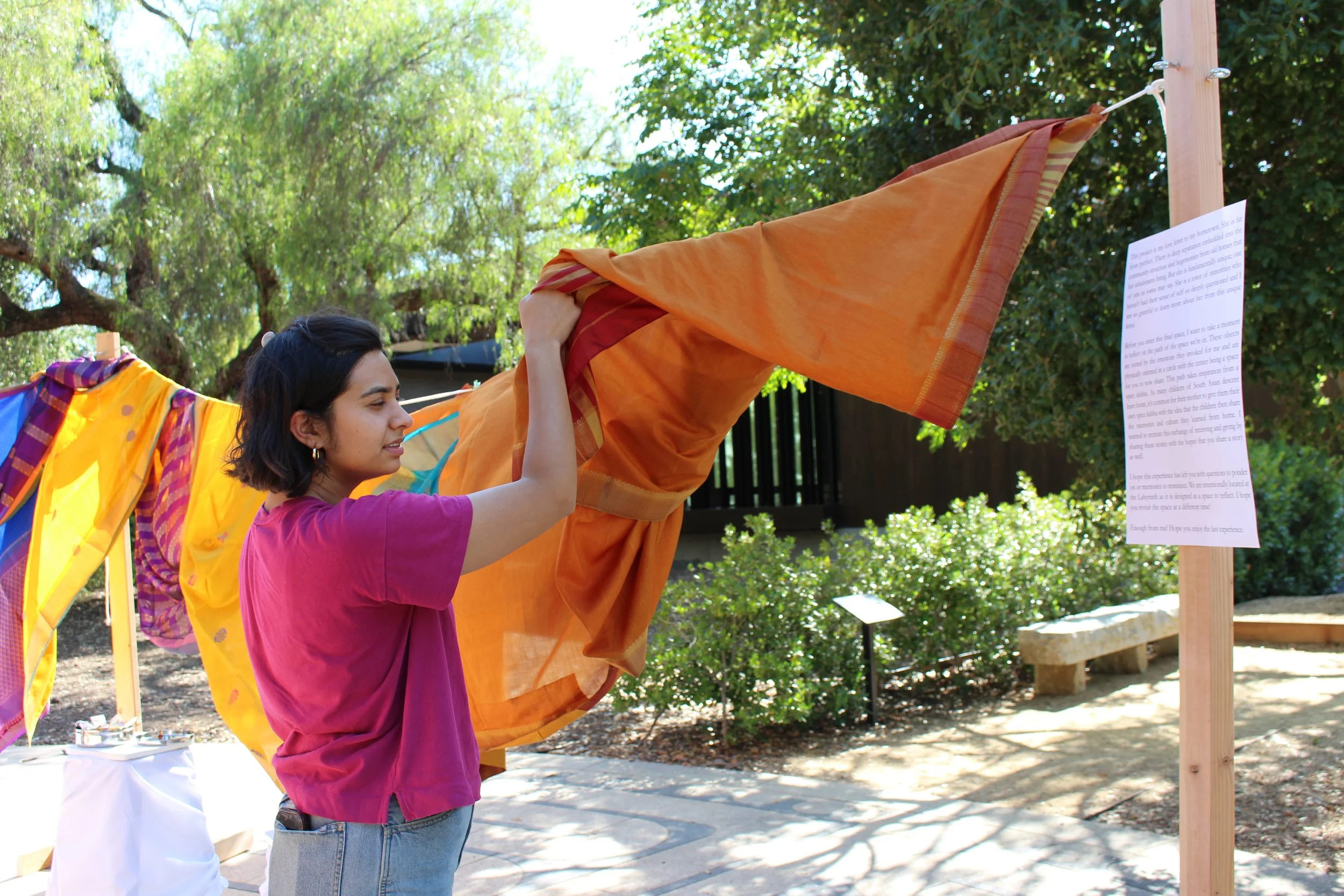the objects that define us
Stanford capstone project, 2024-2025
what are relics from your past?
I spent the last ten months contemplating this question. Through my research, I discovered that objects carry memory, they carry emotion. And reflecting on these objects brings up an avenue for new contemplation.
I presented this finding through an installation of people’s objects and the stories and memories they carry with them. I wanted to see if people could relate to objects that hold meaning to others.
whose objects are these?
The project initially started as a desire to explore how emotions are cultivated in homes where parents' childhoods are starkly opposite to that of their children: the experience of many immigrant families in America. Over the span of five months, I interviewed over forty individuals from Edison, NJ, my hometown, as it is a rare minority-majority town in America. In recent decades, many Asian-American families have settled in the town, and these cultures have been sewn into the fabric of the community.
Through these interviews, I noticed that when people talked of their past, they often brought up tangible items from their past. A prom dress was associated with a feeling of rejection, a saree was associated with memories of family long gone, a Boy Scout vest with experiencing racism for the first time. And when these stories were shared, reflecting on the object helped the person realize how they have worked through the emotions associated with the experience.
how did i design the experience?
The installation is intentionally set outside and made with materials that are either easy to source, like 2x4s, or are relevant to the community, like the use of my mother's sarees. The experience is individual. At the start, the participant is asked to use headphones and they can hear the story of each object from its owner as they go through. The objects are spaced out in accordance with emotion, starting with heavier stories and ending with stories centered around joy and love.
what was the flow?
did they relate?
The spice dubba (an Arabic and Urdu word for “container”) came up a lot in the interviews and was one of the objects in the exhibit because it is an item that is often shared from mother to child in South Asian homes. Thus, the dubba was a means of organization of the space: we started with the idea of survival and ended the experience of listening with a dialogue between parents and children on reframing. Through my prototyping, I felt this constant tension of people listening to stories and taking but not giving anything in return, it felt exploitative. But, spice dubbas are also given by mothers in hopes that the child learns and embraces food from home to eventually share their food with others. To embody this trust, I pivoted to making the center of the installation a space for the participant to give.
In this space of reflection, I asked the participants to look up at the sky, daydream, and think about what the objects made them feel. What stories came up for them? who did they think of?
Participants left their stories and thoughts into a voice recorder.
“I’m thinking back to the community I had in adversity, how living between two worlds felt.”
“We often have a lot more in common than the things that separate us.”
Despite all participants having no personal experience with the community, everyone felt the shame, pride, joy, love for family that these stories brought up. And they left the experience pondering on their own stories.
so, what’s next?
The experience is inherently non-permanent. I'm pondering what it would mean to bring this experience to other communities of color. What stories would come up? What fabrics would feel appropriate? I would love to explore people coming together to talk about the things we don't talk about. There's so much power that could come from more people having the realization that "we have a lot more in common than the things that separate us.”



